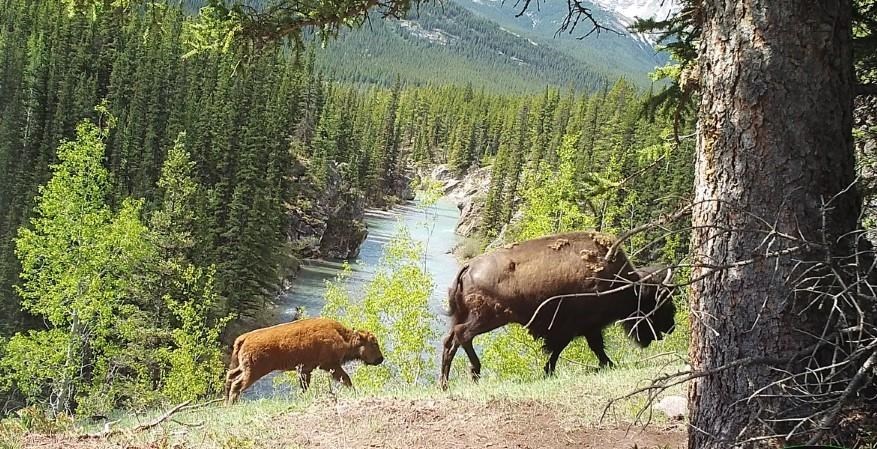BANFF, Alta. — Parks Canada officials are trying to determine what's next for a herd of plains bisonin Banff National Park after a draft report shows its reintroduction in the park's backcountry has been successful.
The report on a five-year project, published online earlier this week, says the bison herd in the national park in Albertahas grown to more than 80 animals from the 16 that were relocated in 2017 from Elk Island National Park near Edmonton.
Parks Canada declined an interview request, but the report on the project says it has worked.
"The five-year pilot represents the most recent efforts of Parks Canada in supporting the recovery of plains bison and has identified that Banff National Park is a feasible location where bison can successfully exist on the landscape," it says.
"With these positive findings, it is recommended bison remain on the landscape in the area in a controlled and measured form."
The report says the bison have remained healthy and demonstrated a good growth rate with minimal deaths, adapted well to the mountain habitat and remained mostly within the park boundaries.
Three bull bison wandered out of the park in the summer of 2018, after the animals were allowed to roam wild. One of those animals was shot by wildlife staff outside the park, while the other two were taken to fenced paddocks in Waterton Lakes National Park and Rocky Mountain House Historic Site. The report says a fourth bull wandered out of the park in 2021 and was also killedby wildlife staff. Two calves died of natural causes in 2019 and 2020, it says.
No other animals in the park were negatively affected and there were no reports of threats to public safety or property damage, the report says.
It adds that the project has strengthened relationships with several First Nations that has included ceremonies to bless the animals, as well as annual women's and youth hikes to see the herd.
The project has also provided some educational programs for visitors to learn about bison both online and in person.
Parks Canada is taking feedback from the public, including Indigenous communities, until Dec. 14 on what they think about the project to determine its next steps.
"It is anticipated that in addition to this report, engagement on the report will set the stage for bison management for the next 10 years and beyond," says the draft report.
Marie-Eve Marchand, who was part of the Bison Belong campaign to bring the animals back to Banff and organizes the Indigenous hikes to see the herd, said it's a good report.
"It's beautiful to see what giving some space to the bison and giving them five years to establish their home (has accomplished)," she said Friday. "There are so many positives, even in such a short period.
"They are there to stay."
Marchand said one of the next steps should consider a shared responsibility for the herd with Indigenous communities.
"There's a lot of place to grow in relationship and learning," she said.
Diandra Bruised Head, a member of the Kainai Nation who's gone on the women's hike to see the bison, said she's happy to hear the project has been successful.
"I am immensely proud but I am not surprised," she said in an interview.
Bruised Head said bison — or buffalo, as they are traditionally known by Indigenous people — are a perfect example of how western science can be balanced with traditional knowledge.
"This is more than just putting animals back," she said. "Buffalo, to me ... are a sign of hope."
An Indigenous-led report released in April said relying on traditional knowledge could help to ensure the continued success of the bison in the park.
The Stoney Nakoda Nation, east of Banff, did a cultural assessment on the bison as an important species to Indigenous people.
A team worked with elders, knowledge keepers and youth to get a better understanding of bison habitat, behaviour and practices from an Indigenous perspective. It found the bison helped Stoney Nakoda people reconnect to their traditional lands, migration routes, camping sites, and hunting and gathering sites within the park.
The Indigenous report included 11 recommendations to ensure the continued success of the project and for co-operative management of the bison herd.
Those included continuing the program after the pilot project, holding ceremony with First Nations at the start of each new phase and allowing cultural monitoring fieldwork to continue.
Stoney Nakoda Nation also urged expansion of the reintroduction zone to include the rest of the park and asked that the park allow First Nations to harvest animals once the herd grows too large.
This report by The Canadian Press was first published Nov. 11, 2022.
— By Colette Derworiz in Calgary
The Canadian Press



